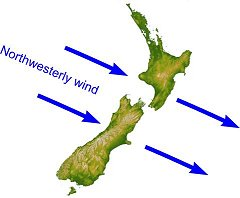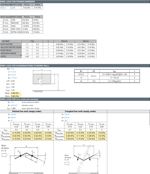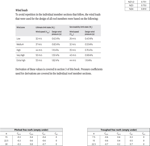Design wind load to NZS1170.2 / NZS3604

Description
NZS1170.2 and NZS3604 are New Zealand standards that provide guidelines and requirements for determining various design loads, including wind loads, that must be considered in the design of buildings and structures to ensure their safety and stability. NZS1170.2, 'Structural Design Actions - Part 2: Wind Actions,' focuses on wind load determination, while NZS3604, 'Timber-framed Buildings,' provides design criteria for timber-framed structures, including wind loads.
Here is a summary of the design wind load process based on NZS1170.2 and NZS3604:
-
Wind region and design wind speed: Determine the wind region for the building location using the maps provided in NZS1170.2. Obtain the design wind speed (V) based on the region, which represents a 10-minute mean wind speed at a height of 10 meters above ground level.
-
Terrain category and height multiplier (Mz,cat): Determine the terrain category based on the terrain and surface roughness at the building site, as described in NZS1170.2. Calculate the height multiplier (Mz,cat) for the building height using the relevant formulas provided in the standard.
-
Wind direction multiplier (Md): Calculate the wind direction multiplier, which accounts for the fact that wind loads from different directions may not act simultaneously.
-
Building classification: Classify the building based on its intended use and occupancy, as described in NZS1170.2. This classification influences the annual probability of exceedance, which affects the design wind loads.
-
Design working life and annual probability of exceedance: Determine the design working life of the building based on its classification, as described in NZS1170.2. Select the appropriate annual probability of exceedance for the design working life.
-
Design wind pressure (qz): Calculate the design wind pressure (qz) acting on the building using the following formula:
qz = 0.613 * Mz,cat * Md * V^2
Where: Mz,cat = height multiplier Md = wind direction multiplier V = design wind speed
-
External and internal pressure coefficients (Cpe and Cpi): Consult NZS1170.2 for the appropriate external pressure coefficients (Cpe) and internal pressure coefficients (Cpi) based on the building geometry, roof shape, and enclosure classification.
-
Determine design wind loads: Calculate the design wind loads (F) on the building and its components by multiplying the design wind pressure (qz) with the appropriate pressure coefficients (Cpe and Cpi):
F = qz * (Cpe - Cpi)
-
Load combinations: Combine the design wind loads with other loads, such as dead and live loads, using the appropriate load combination factors provided in NZS1170.0.
-
Structural analysis and design: For timber-framed structures, follow the design criteria and requirements provided in NZS3604 to analyze and design the building and its components to resist the design wind loads, ensuring that they meet the strength, serviceability, and deflection requirements of the standard.
By following the design wind load process outlined in NZS1170.2 and NZS3604, engineers can accurately determine the wind loads acting on a structure and ensure that it is designed to withstand these loads throughout its service life.
Calculation Preview
Full download access to any calculation is available to users with a paid or awarded subscription (XLC Pro).
Subscriptions are free to contributors to the site, alternatively they can be purchased.
Click here for information on subscriptions.


